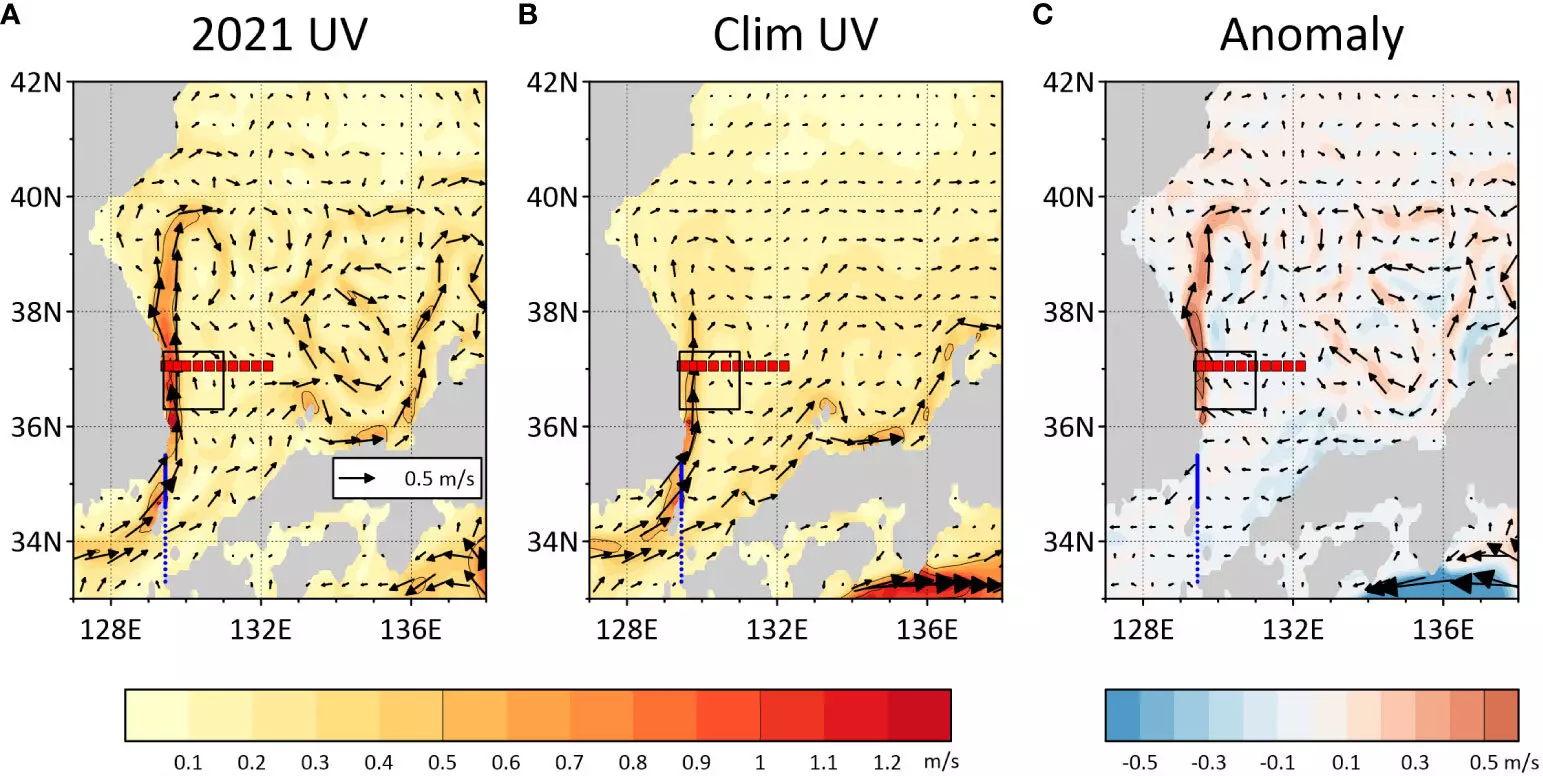Extreme environmental events are a growing concern as climate change continues to exert its impact on both terrestrial and marine ecosystems. Heat waves, particularly in the ocean, are proven to be significant contributors to this trend. In the summer of 2021, an unprecedented marine heat wave occurred in the East Sea (Sea of Japan, northwest Pacific), with the East Korea Warm Current (EKWC) experiencing record-breaking changes in dominant patterns. This article aims to delve into the factors that likely led to this extraordinary event.
The EKWC, a western boundary current off the east coast of South Korea, is responsible for carrying warm water from the tropics poleward. In July 2021, doctoral researcher Gyundo Pak and his team from the Korea Institute of Ocean Science and Technology observed a northward shift of the EKWC up to 40°N. They also recorded an exponential increase in current speeds, reaching highs of 1.16m/s. In addition, the volume of water transported via the EKWC during this time was more than double the normal levels, making it a critical inflow branch to the East Sea.
The Role of Temperature Gradients and Wind Patterns
The sudden changes in oceanographic conditions, resulting in the anomalous marine heat wave, can be attributed to temperature gradients between coastal and offshore regions and shifts in wind patterns. In early July, coastal downwelling and freshwater discharge from rivers began to develop, leading to a “push” of warm surface waters to greater depths and preventing nutrient-rich cold waters from reaching the surface near the coast. This phenomenon creates zones of low productivity for marine organisms.
By mid-August, the wind patterns were further altered by the arrival of the monsoon, specifically Typhoon Lupit. The southerly wind-induced upwelling caused by the typhoon led to significant alterations in surface temperatures. Consequently, the EKWC experienced a rapid deceleration, weakening to summer background levels of 0.5m/s. The passage of Typhoon Lupit also weakened the Ulleung Warm Eddy, a lens-shaped water mass within the thermocline, located at a depth of 200-300m. This subsurface layer contributed the most to the temperature change and was influenced by the nearby eddy.
Researchers primarily attribute the marine heat wave of 2021 to an abnormality in ocean temperature. The heightened temperatures in the subsurface layer, particularly influenced by the Ulleung Warm Eddy, played a significant role in triggering this phenomenon. However, the passage of Typhoon Lupit weakened the eddy, resulting in a decline in temperature anomalies.
The Importance of Understanding Marine Heat Waves
Understanding the occurrence and causes of marine heat waves is of utmost importance, not only for the health of the oceans but also for the well-being of communities reliant on marine resources. Fishing communities, in particular, depend on seafood as a crucial source of protein for a significant portion of the global population. By unraveling the mysteries behind marine heat waves, we can develop strategies and interventions to mitigate their adverse effects and protect the delicate balance of our marine ecosystems.
The 2021 marine heat wave in the East Sea served as a wake-up call to the growing threat of extreme environmental events. The unusual shifts and intensification of the East Korea Warm Current, influenced by temperature gradients and changes in wind patterns, resulted in this unprecedented phenomenon. The collaborative efforts of researchers and scientists shed light on the causes and impacts of marine heat waves, emphasizing the need for proactive measures to safeguard the oceans and the communities that depend on them. By continuing to delve into the complexities of climate change and its effects, we can strive towards a more sustainable and resilient future.


Leave a Reply